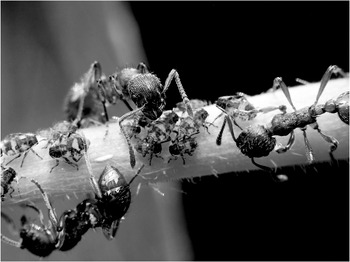
:max_bytes(150000):strip_icc()/fireants-58f193de3df78cd3fccb28e2.jpg)
Reproductive females (queens) only mate at the beginning of their adult lives and subsequently maintain viable sperms in their spermatheca until their death. In social Hymenoptera such as ants, social wasps, and bees, females have prominent long-term sperm storage abilities according to their specialized life history. Female sperm storage from mating to fertilization is a major reproductive strategy and is associated with reproductive life cycles and post-copulatory sexual selection among most insects and some vertebrates 1. Reproductive success is crucial for sexual organisms, and a great diversity of reproductive strategies have been evolved in each species and sex, including copulation behaviours, sperm competition, investment for gamete production, efficiency of fertilization, and parental care. These genes have never been reported in the reproductive organs of insect females, suggesting specialized roles in ant spermatheca. In situ hybridization analyses of 128 selected contigs revealed that 12 contigs were particular to the spermatheca. Gene Ontology enrichment analyses suggested that antioxidant function is enhanced in the spermatheca at 1-week after mating compared with the virgin spermatheca and the spermatheca at 1-year after mating. We also performed differential expression analyses between the virgin and mated spermathecae or between the spermathecae at 1-week and 1-year after mating, to identify genes altered by the mating status or by the sperm storage period, respectively.

The genes encoding antioxidant enzymes, proteases, and extracellular matrix-related genes, and novel genes that have no similar sequences in the public databases were identified. To reveal the prolonged sperm storage mechanisms, we identified enriched genes in the sperm-storage organ (spermatheca) relative to those in body samples in Crematogaster osakensis queens using the RNA-sequencing method. In most ant species, queens live for over a decade, indicating that ant queens can store large numbers of spermatozoa throughout their long lives. Females of social Hymenoptera only mate at the beginning of their adult lives and produce offspring until their death.


 0 kommentar(er)
0 kommentar(er)
